FINAL COPY Foundation of nero final exam
1/408
Earn XP
Description and Tags
note 10 -17
Name | Mastery | Learn | Test | Matching | Spaced |
|---|
No study sessions yet.
409 Terms
Visual information is transmitted to the brain by both the what?
Contralaterally - Projected to the opposite side of the brain
Ipsilaterally - Projected to the same side of the
brain
What can lesions to the visual pathways cause?
impairments in vision
These are not directly affecting object recognition, but the detection of visual information from a portion of the visual field
The portion of vision lost depends on where along the visual pathway damage is located
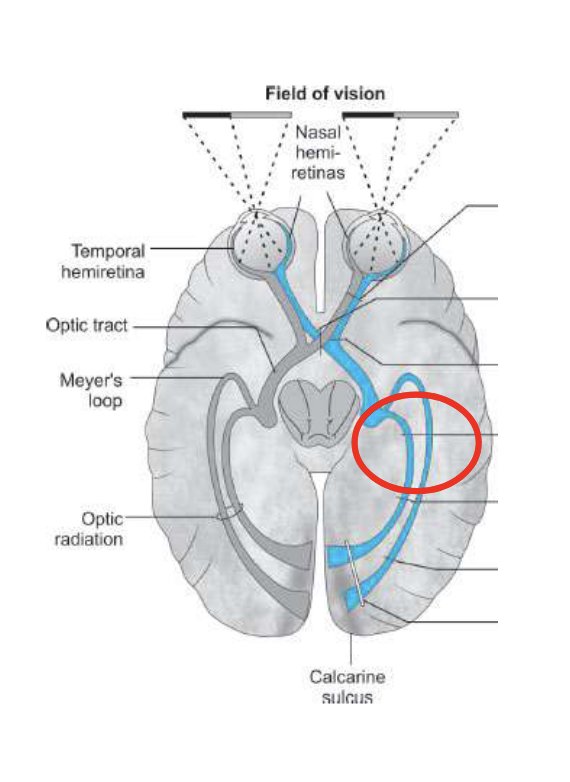
What is Homonymous Hemianopsia?
a field loss deficit in the same halves of the visual field of each eye
When pathways are severed after the optic chiasm, information from One Side Visual Field is lost
When the optic chiasm is damaged, information from different visual fields can be lost for each eye depending on the location of damage
The result is loss of the same visual field (left or right) for each eye
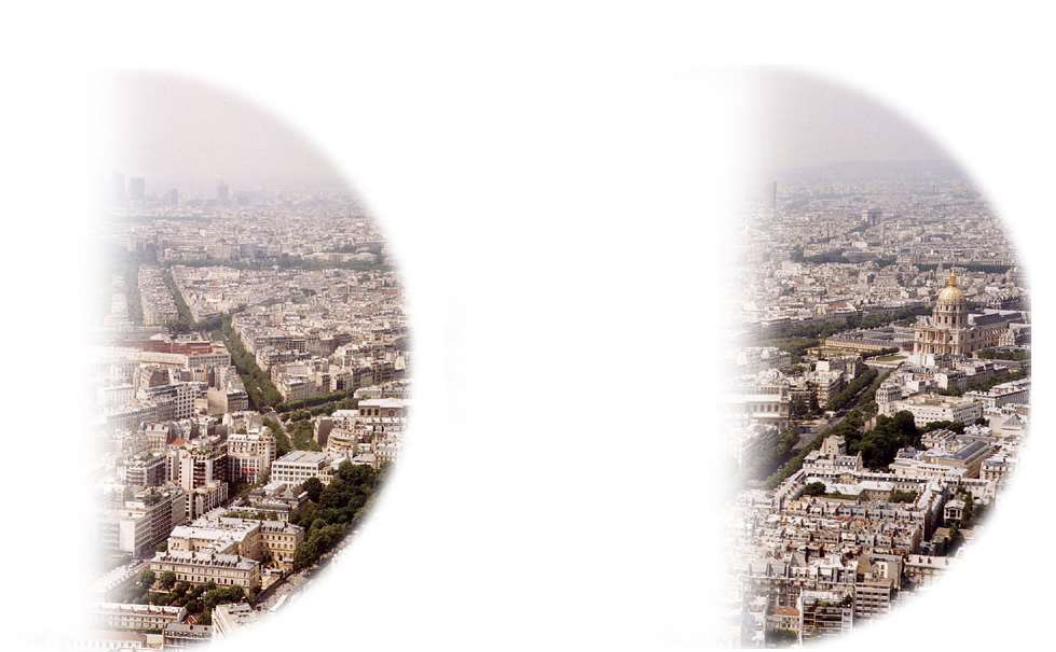
What are the two ways Heteronymous Hemianopsia can be lost?
bi-nasal
bi-temporal
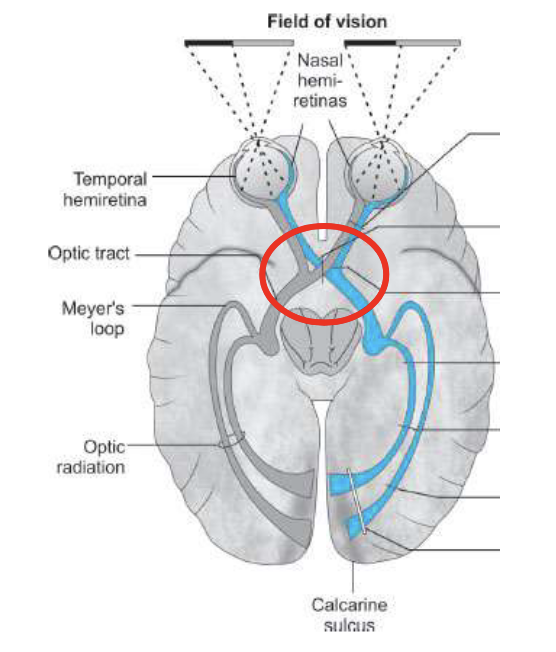
What is Binasal heteronymous hemianopsia
Loss of central visual fields towards the nose

What is Bitemporal heteronymous hemianopsia
Loss of medial visual fields - away from the nose

What did Hubel & Wiesel discover?
that certain cells in the brain respond to simple shapes
Visual information reaching the brain must then be perceived
E.g., Cells may respond to a particular angle of line, line width, etc.
These neurons, located in V1, are called feature detectors
What are Feature Detectors?
Neurons that respond selectively to very specific features of more complex stimuli.
They respond to very simple shapes
Those simple shapes are combined in the brain to aid with pattern recognition
This is called Feature Analysis
What is Feature Analysis?
The process of detecting specific elements in visual input and assembling them into more complex forms

What is required for the formation of mental representations of objects?
Its thought to require higher visual processing areas and other regions of the brain.
How does visual information move beyond V1?
There are strong feed-forward projections from V1 neurons to secondary and tertiary areas, such as:
V2 (Secondary visual cortex)
V3 (Tertiary visual cortex),
which continue visual processing.
How is information processed after being detected at V1?
Information first detected at V1 is projected forward to V2, V3, and other higher visual processing areas for further analysis.
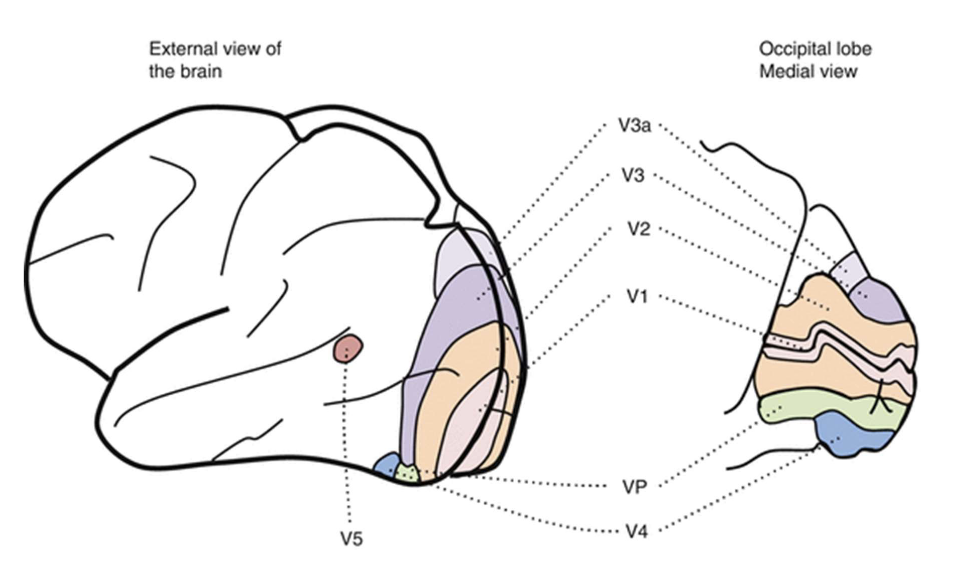
How do V2 neurons contribute to visual processing?
V2 neurons receive input from V1 neurons and build on basic features such as simple lines and shapes detected by V1’s feature detectors.
They also extract more complex visual attributes, including
texture,
depth, and
color.
Which brain areas are involved in motion detection?
V3 and V5 are specifically implicated in the detection of motion.
How do V3 and V5 respond to illusory motion in humans?
During fMRI scans, these areas become active when individuals attempt to parse (analyze) visual illusions that induce illusory motion.
What is Illusory Motion?
Optical illusions where static images appear to be moving
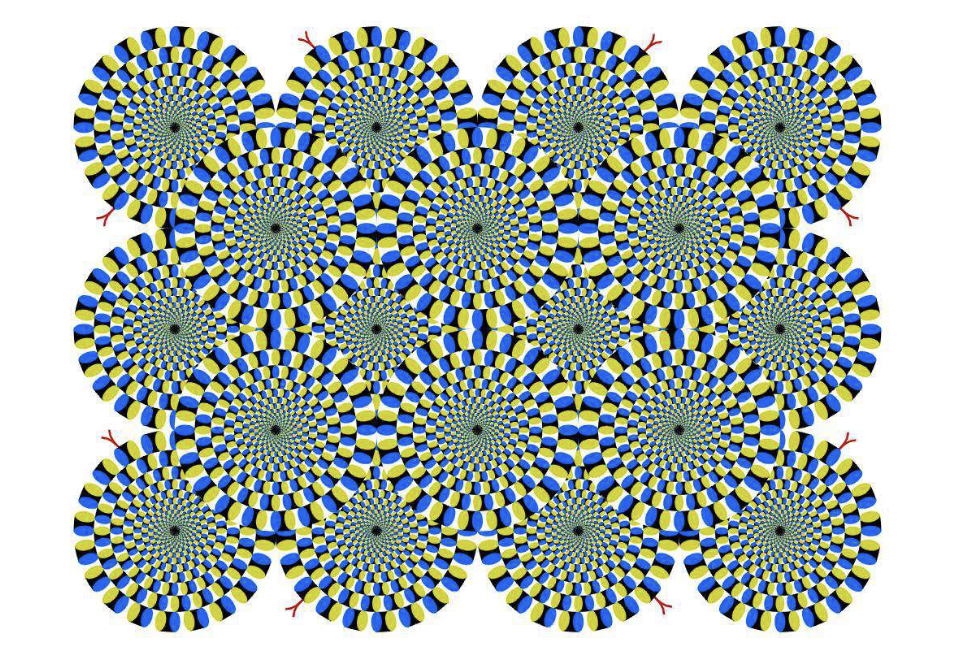
What is Akinetopsia?
A visual disorder that causes difficulty specifically perceiving objects in motion
When these areas become damaged
This can lead to failure of one’s ability to detect motion
Primarily after damage to V5
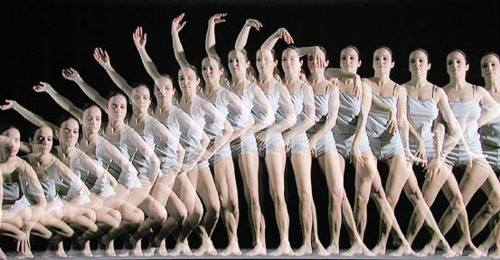
Akinetopsia is associated with what?
Motion trailing
This condition is very rare; complete loss of motion detection is even more rare

Who is patient L.M.
a patient with complete selective and specific loss of movement vision
Described people appearing around them, but unable to see them moving
"people were suddenly here or there but I have not seen them moving“
Also described difficult with daily tasks like pouring a cup of coffee, because fluid did not appear to move
What is Object Constancy?
Refers to our ability to recognize an object in countless situations
We can recognize the same object by mentally rotating it
We are aware that the same object is the same object under many different circumstances, in different orientations, etc

What are the factors that affect the way that we perceive and recognize objects?
Viewing position
Illumination
Context
How does our perceptual system maintain object constancy in regards to viewing position?
It fills in the blind spot in our visual field and also uses past experience to make assumptions about objects.
This process is adaptive and cognitively efficient, as assumptions based on past vision are usually correct.
Sensory cues and prior knowledge help maintain object constancy.
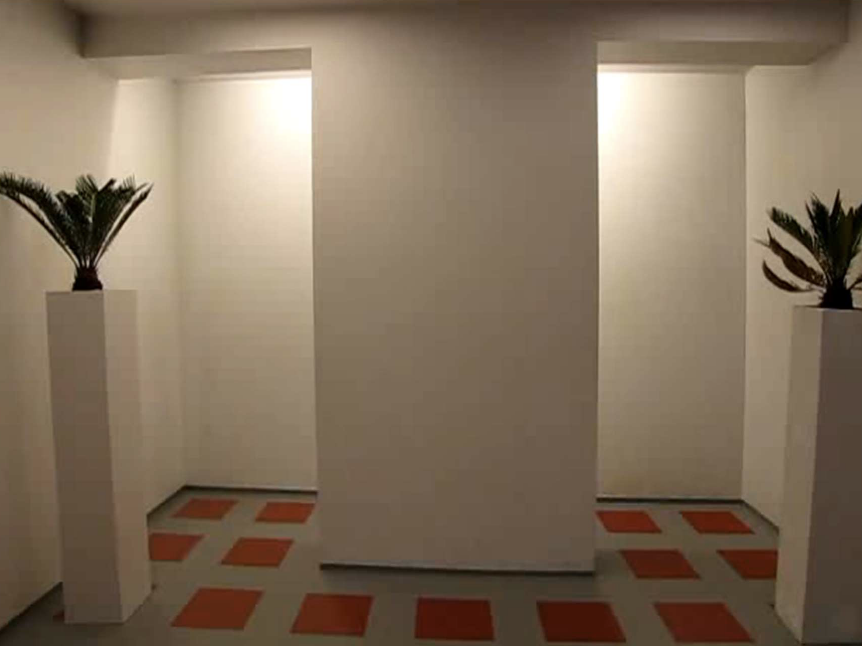
What can mental shortcuts in perception lead to?
While our brain's use of past experience is efficient, it also introduces the possibility of error.
These mental shortcuts can sometimes lead to visual illusions.

How does our visual system account for illumination in object recognition?
Our visual system naturally adjusts for changes in illumination, allowing us to recognize objects consistently, whether they are in the shade, a bright showroom, or sunlight.
However, object recognition also relies on mental shortcuts related to illumination, which can sometimes lead to errors.
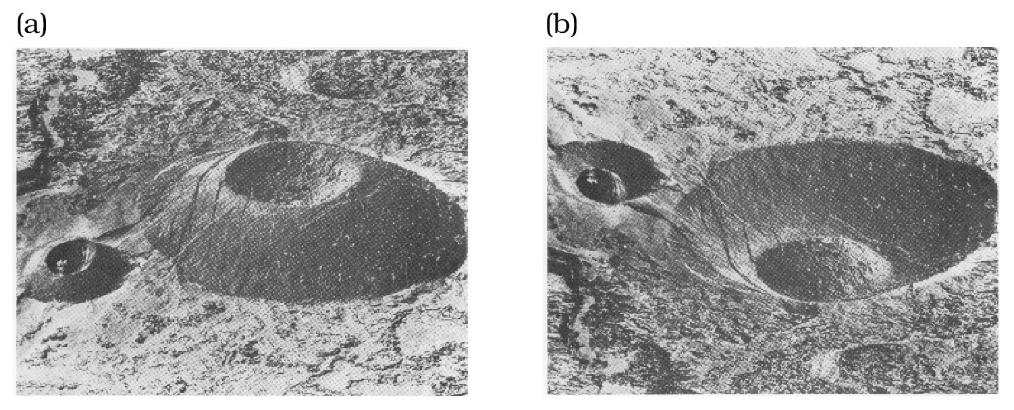
What is Light-From-Above Prior?
A bias to interpret ambiguous shading patterns as if formed by a light source located above
Occurs when no obvious other light source is visible in the scene
What is Context Illusion of Size?
An object surrounded by other objects larger than itself tends to be perceived as being smaller, and vice verse
Objects are rarely seen in isolation
Our perceptual system quickly recognizes and separates these components
However – these perceptual systems also make some assumptions about context
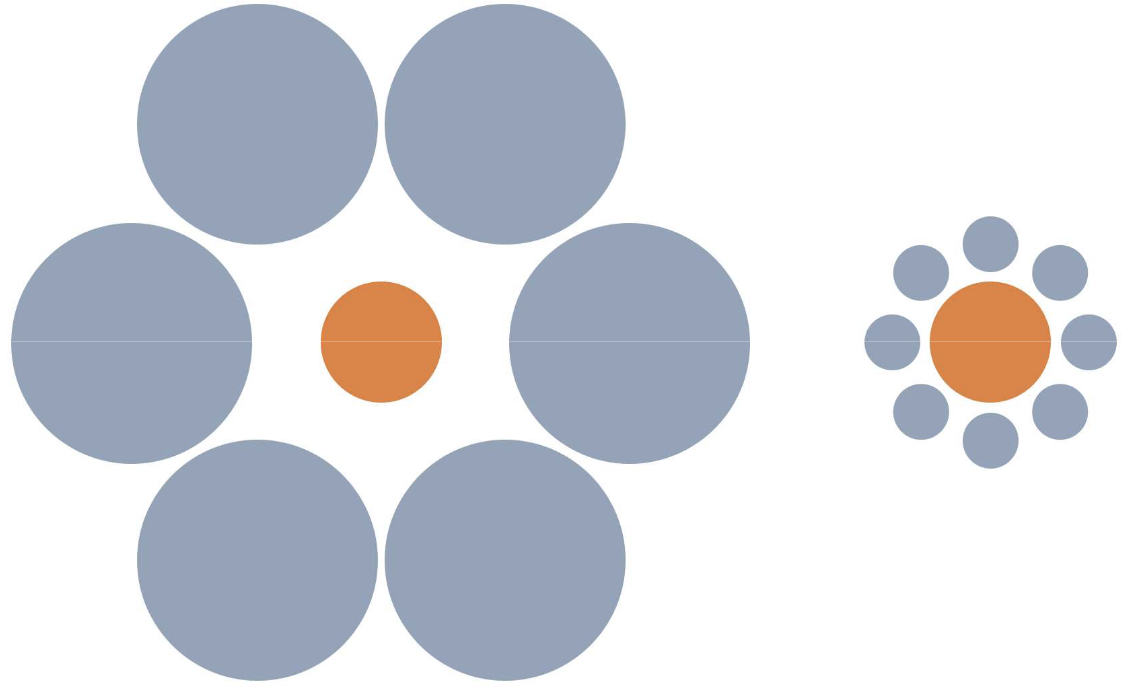
What are the brain separate pathways for processing different types of visual information about objects.
Dorsal Stream
Ventral Stream
What is the Dorsal Stream?
The “Where pathway”
Processes information about where objects are
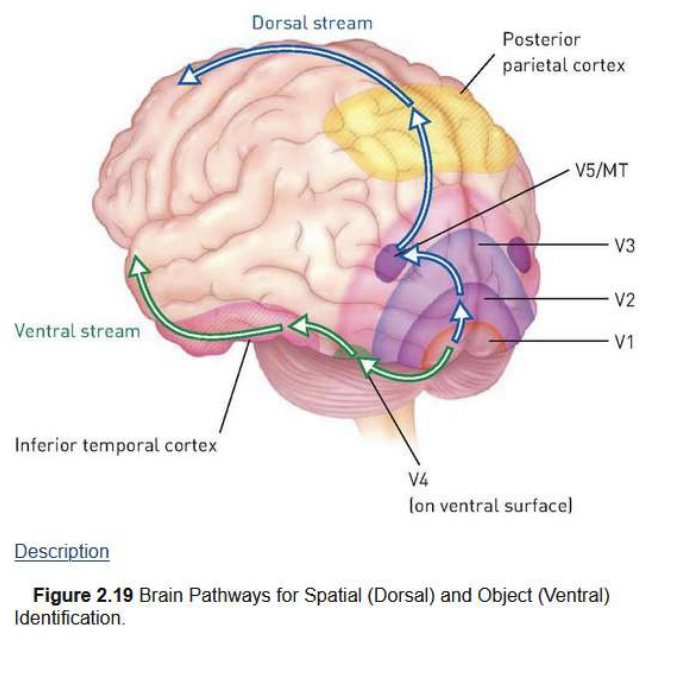
What is the Ventral Stream?
The “What” pathway
Processes information about what objects are

How is visual information processed after it leaves the Primary Visual Cortex (V1)?
is carried along two main pathways
one to the temporal lobe
one to the parietal lobe
both involved in object recognition.
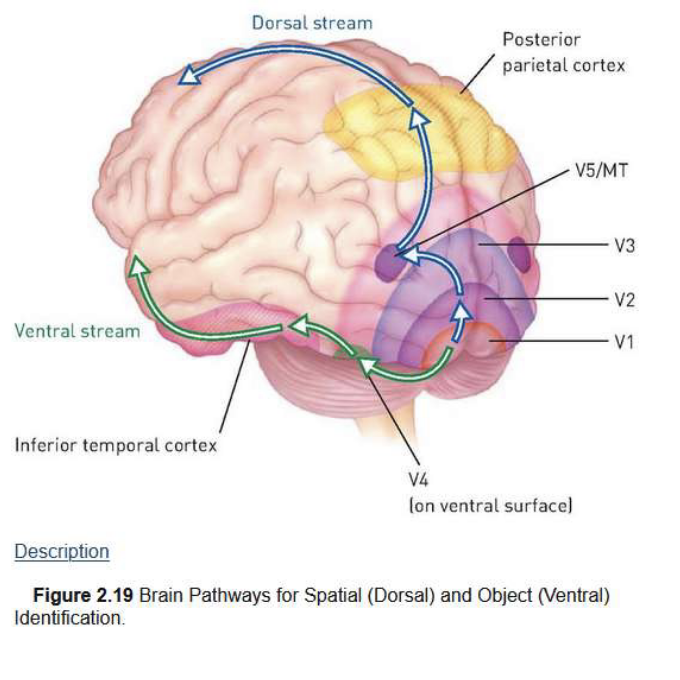
What is the function of the Dorsal Stream in visual processing?
projects from V1 to the posterior parietal cortex via the superior longitudinal fasciculus
is involved in processing spatial location and movement.
What is the function of the Ventral Stream in visual processing?
Projects from V1 to the inferior temporal cortex via the inferior longitudinal fasciculus
is responsible for identifying and recognizing objects.
What are the names of the two major tracts involved in visual processing?
Superior longitudinal fasciculus (Dorsal "Where" Stream)
Inferior longitudinal fasciculus (Ventral "What" Stream).
What are the effects of damage to the visual object recognition pathways?
Damage to the temporal lobe, which affects the "what" pathway, causes animals to fail at recognizing objects
they cannot distinguish objects associated with rewards, like food, from other objects.
In contrast, damage to the parietal lobe, affecting the "where" pathway, results in difficulty locating objects, even though animals can still discriminate between different types of objects.

What is Agnosia?
An impairment in the recognition of objects.
Damage to the temporal lobe pathways can also lead to impairments in visual object recognition; these disorders are called Agnosia
Two major types of Visual Agnosia:
Apperceptive
Associative

What is apperceptive visual agnosia and how does it relate to feature detectors ?
Is a disorder where individuals are unable to form mental representations of whole objects.
Although feature detectors can detect simple shapes, damage to visual pathways can prevent the brain from assembling these parts into a complete object. This shows that assembling basic features is a separate process from detecting them.
How is associative visual agnosia different from apperceptive visual agnosia?
People with associative visual agnosia can mentally assemble basic features into whole objects but are unable to recognize or identify them.
This indicates that linking mental representations to stored knowledge about the object is a distinct cognitive process.
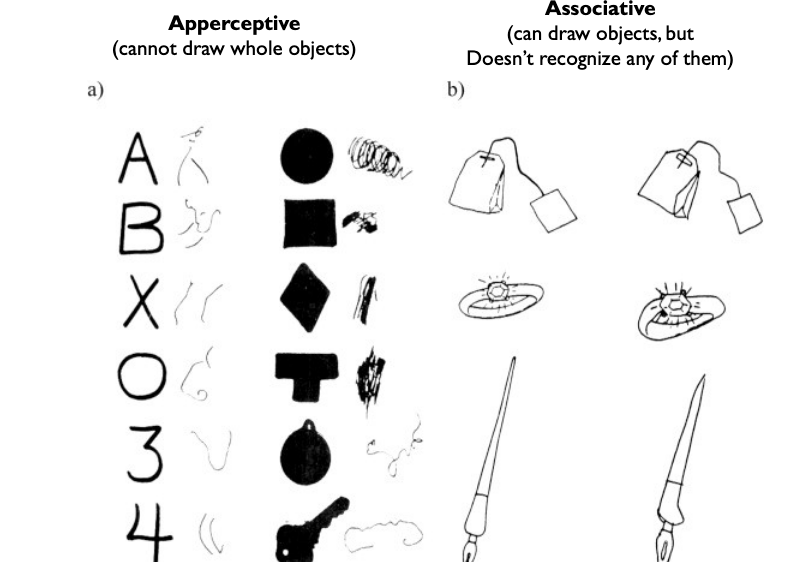
What does the existence of agnosias suggest about visual processing?
These disorders suggest that detecting features, assembling them into whole objects, and associating them with stored knowledge are separate stages in visual processing, each potentially affected by different types of brain damage.
What happens when there is damage to the pathways responsible for pattern recognition?
Damage can lead either to difficulty assembling basic visual features (apperceptive agnosia) or to difficulty recognizing and assigning meaning to assembled objects (associative agnosia), depending on where the disruption occurs in the visual processing stream.
What is tactile agnosia and what causes it?
is the inability to recognize objects through touch, despite normal sensory function.
It occurs when non-visual object recognition pathways—about which we know less—become damaged.
This form of agnosia affects the ability to detect objects by feel, independently of visual or other types of object recognition.
What is the Fusiform Face Area and what is its role in perception?
is a specialized region of the brain responsible for facial recognition.
This function is distinct from general object recognition, indicating that the brain has specific mechanisms dedicated to detecting and recognizing faces.
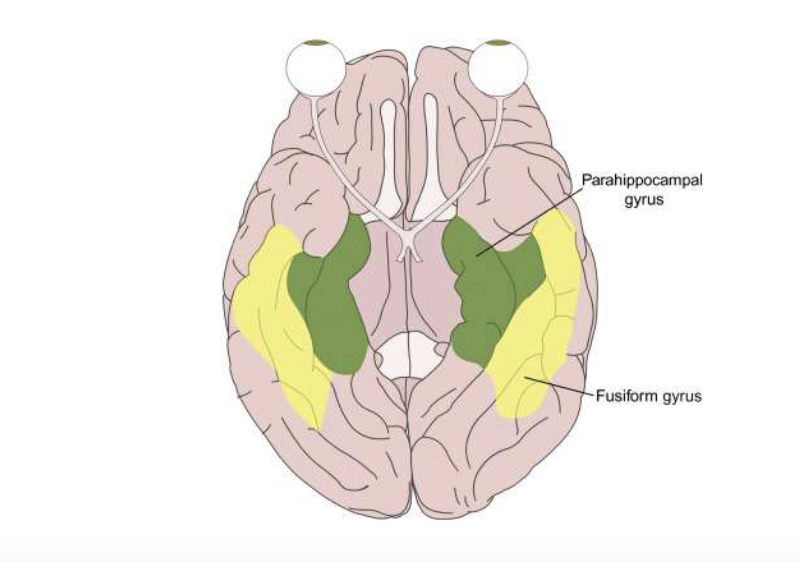
What happens when Fusiform Face Area gets damaged?
it leads to Prosopagnosia: an inability to recognize faces
What are the key features of human memory systems?
Humans have many different memory systems, each supporting various types of memories and involving different brain structures. Over time, memories change and are strengthened through a process called consolidation, which occurs when memories are accessed repeatedly.
Who are Atkinson & Shiffrin?
Proposed a model of different systems of memory and how they interact
What are the main types of memory
Sensory Memory
Short-Term Memory
Long-Term Memory
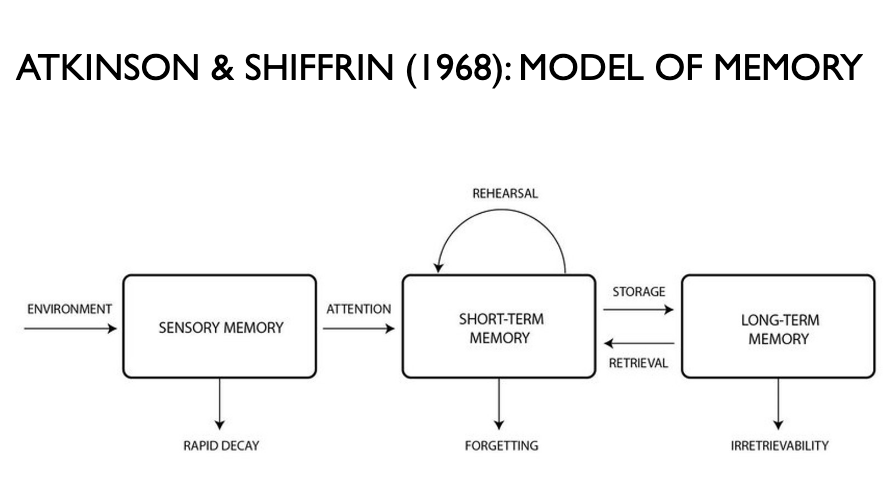
Explain ATKINSON & SHIFFRIN model of memory chart
Sensory Memory – Information from our surroundings enters briefly. If we don’t pay attention to it, it quickly disappears.
Short-Term Memory – When we focus on something, it moves into short-term memory, where we can hold it for a short time. Repeating it (rehearsal) helps keep it longer. If we don’t, we forget it.
Long-Term Memory – With enough repetition, information gets stored in long-term memory, where we can keep it for a long time. When needed, we can bring it back, but some memories may become hard to retrieve over time.
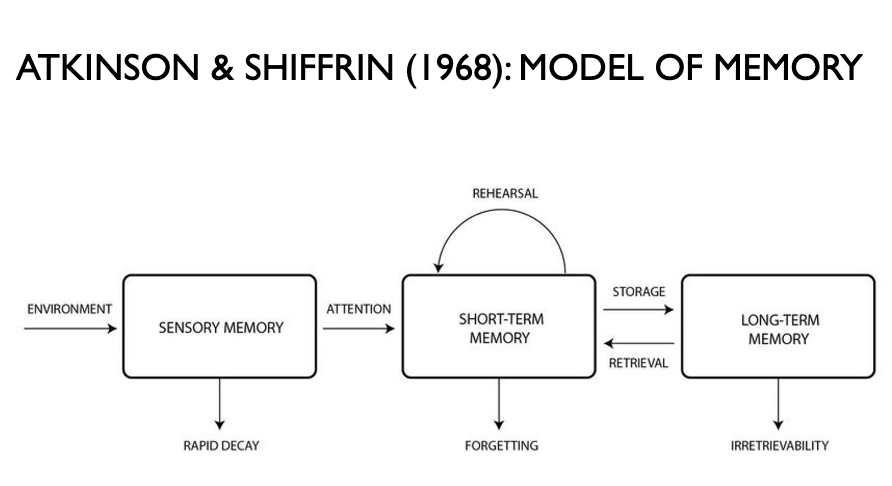
What is Sensory Memory (Sensory Registers)?
A sensory store that preserves visual information for brief period last from a fraction of a second to one second
How does sensory memory handle information from your surroundings?
Information from your surroundings is briefly retained even if you do not pay attention to it.
The senses gather information from the environment, and this information is very briefly stored. Information that does not get your attention is then rapidly discarded.
What is Short-Term Memory (STM)?
is a temporary memory store that is limited in both capacity and duration.
It holds memories that gather your attention for a very short period, typically lasting for a few seconds.
How can information be maintained in Short-Term Memory?
Information can be held in STM through rehearsal, which involves repeating verbal information to keep it in active short-term memory.
What is Working memory?
The idea of using short-term memory as a temporary store of information to complete a task
What is the modern term for Short-Term Memory (STM)?
STM is now often referred to as Working Memory.
Who proposed the model of Working Memory and when?
Baddeley & Hitch in 1974.
What did Baddeley’s model emphasize about Working Memory?
We perform mental operations on information stored in STM, meaning STM is not just for storage.
What are the two separate systems involved in Working Memory?
One for visual memory
One for verbal memory.
Together, these systems allow working memory to both store and manipulate information briefly held in memory.
Whats are an example of a VISUAL WORKING MEMORY
This
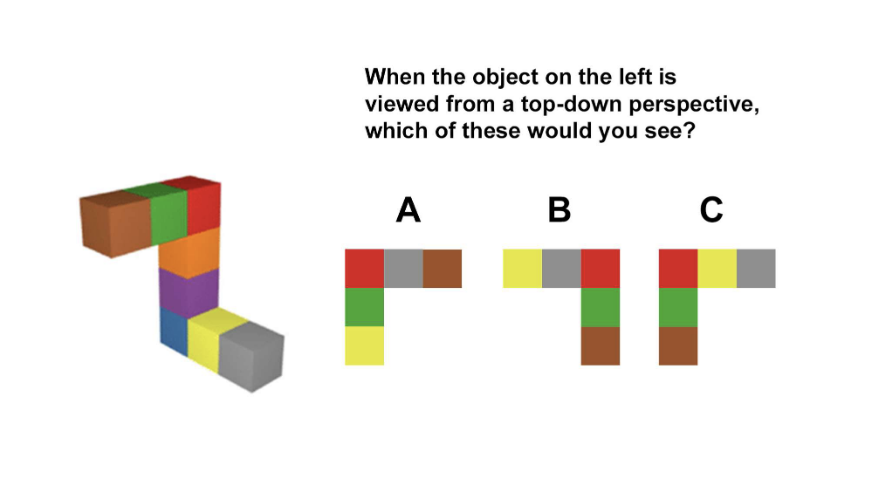
What is an example of a VERBAL WORKING MEMORY
This
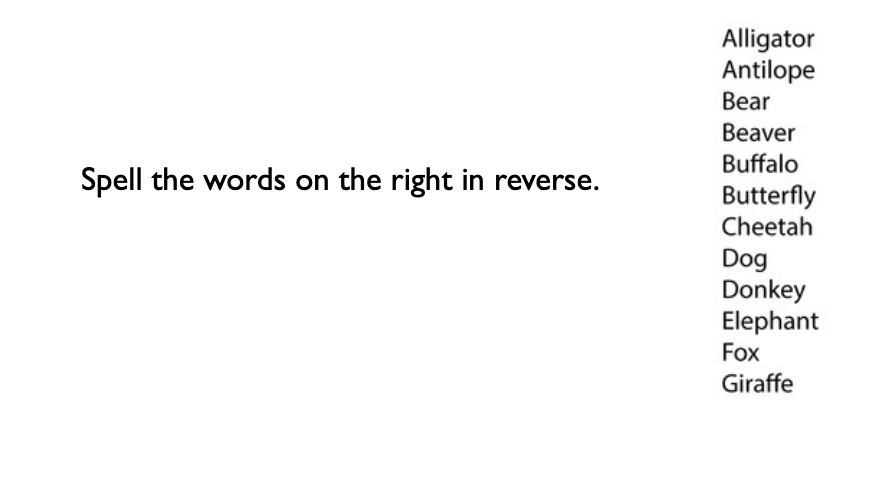
What are the diffrent brain network BADDELEY & HITCH (1974) MODEL OF WORKING MEMORY tasks rely on
Visuospatial sketchpad
Central executive
Phonological loop
(VS CE PL)

What does the Visuospatial sketchpad do?
Maintains and manipulates visual/spatial information
Relies on visual areas (occipital lobe; visual regions)
What does the Central executive do?
Manages the use of working memory
Relies on attention systems (frontal lobe, pre-frontal cortex)
What does the Phonological loop do?
Maintains and manipulates acoustic information
Relies on language regions (superior temporal lobe; Broca’s & Wernicke’s areas)
What brain region does the Phonological Loop and Visuospatial Sketchpad depend on?
The language regions of the brain,
The visual regions of the brain.
What happens if the Phonological Loop and Visuospatial Sketchpad pathways are damaged
Can lead to deficits in working memory ability, suggesting that these are two separate processes in the brain.
What is Long-term memory (LTM)
Is an unlimited capacity store that can hold information over lengthy periods of time
Information from short-term memory can become transferred to long-term/permanent storage
What are the several key stages Long-term memory is acquired, stored, and used?
(1) Encoding: Involves forming a memory code
(2) Storage: Involves maintaining encoded information in memory over time
(3) Retrieval: Involves recovering information from memory stores
What is Consolidation?
a hypothetical process involving the gradual conversion of new, unstable memories into stable, durable memory codes stored in long-term memory
The transfer of newly acquired information to long-term memory is thought to rely on
newly acquired information is strengthened for long-term storage
What is long-term potentiation in simple terms?
The strengthening of connections between neurons
supported by Consolidation
How does long-term potentiation (LTP) work?
occurs when two neurons depolarize (fire action potentials) together over time, which results in a higher likelihood that they will fire together again in the future.
How do neurons communicate with each other?
Neurons can signal to other nearby neurons, causing a change in their excitation. This can either excite or inhibit nearby neurons through post-synaptic potentials, making the receiving neuron more or less likely to fire an action potential.
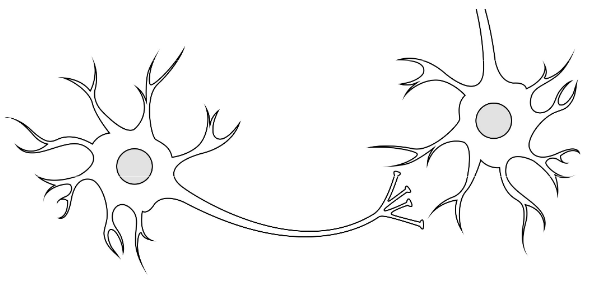
What ways can long-term changes in the strength of neuronal connections occur?
Synapses are not static; the strength of connections between neurons is variable and can change over time.
Long-Term Potentiation (LTP) and
Long-Term Depression (LTD).
What happens when two cells fire together repeatedly?
The post-synaptic cell becomes more sensitive to input from the specific pre-synaptic cell.
This means the post-synaptic neuron is more likely to fire in response to signals from the pre-synaptic (sending) cell.
What occurs to the connection between the two neurons when they repeatedly fire together?
The connection between the two neurons strengthen
For example, the post-synaptic neuron becomes more sensitive to signals from a specific pre-synaptic cell (like B), but not others (A or C).
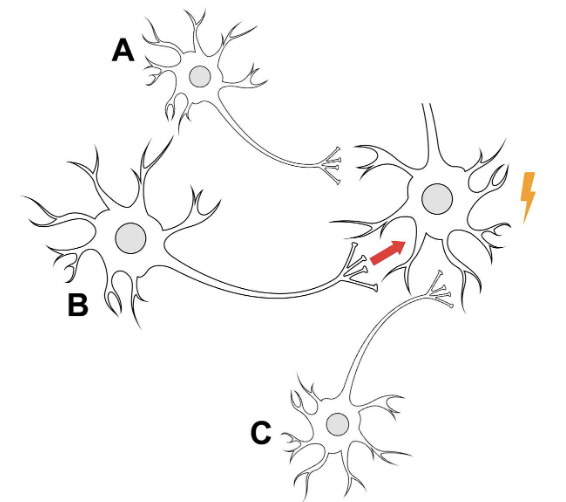
What is Long-Term Potentiation?
an activity-dependent increase in the efficacy of neuronal synapses lasting hours or longer
The strengthening of connections between neurons
supported by Consolidation
What is Long-Term Depression?
an activity-dependent decrease in the efficacy of neuronal synapses lasting hours or longer
Who is DONALD HEBB?
Canadian psychologist; from Dalhousie & McGill Universities
The father of neural networks
Published The Organization of Behaviour in 1949
Proposed that the strength of synaptic connections between neurons can change
Learning Principle: ‘Neurons that fire together wire together’
What are the two main results of Hebb’s theory of learning:
Predictions came very close to describing what really happens in neurons (Long- Term Potentiation)
Computational models of Hebbian Learning gave rise to artificial neural networks: a method in artificial intelligence that teaches computers to process data in a way that is inspired by the human brain
How are modern deep learning algorithms and artificial intelligence related to Donald Hebb's principles?
They are based on the principle of Hebbian learning, which allows computers to mimic the function of the human brain by approximating biological learning.
What are some applications of Hebbian learning in AI?
pattern recognition
predictive AI models
facial recognition
etc
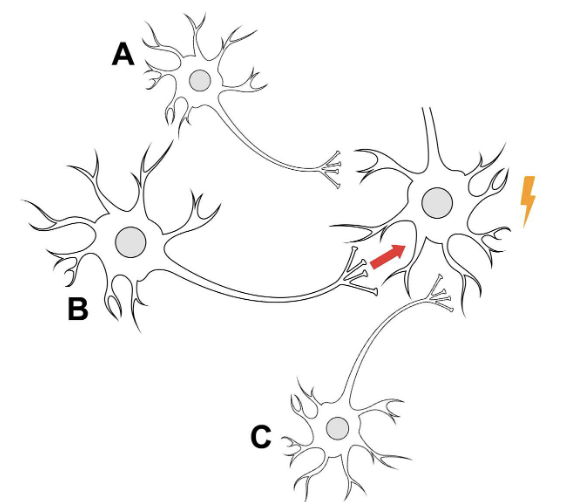
How does the post-synaptic cell Know that signals are coming from B, rather than A or C?
There are Local Changes to post- synaptic cell’s membrane at this synapse
What neurotransmitter is involved in neuronal communication and learning?
The main excitatory is Glutamate
Which receptors are central in the formation of Long-Term Potentiation (LTP)?
The NMDA receptor and the AMPA receptor are central in the formation of Long-Term Potentiation (LTP), and both respond to Glutamate.
What happens when NMDA receptors open in the neuron?
They allow Ca+ ions to flow into the neuron, making the action potential more likely and increasing the sensitivity of the receiving dendrite, making it more likely to cause an action potential.
What two conditions must be met for NMDA receptors to become unblocked?
Two things must happen simultaneously:
The receptor receives glutamate (an excitatory signal from another neuron).
The receiving cell is depolarized and firing an action potential.
How do NMDA receptors contribute to Long-Term Potentiation (LTP)?
When one neuron stimulates another to fire an action potential, localized NMDA receptors at the synapse can open, allowing the postsynaptic neuron to depolarize more easily.
This strengthens the connection between the two cells, making NMDA receptor activation critical for LTP formation.
How does the AMPA receptor contribute to the maintenance of LTP?
When two neurons fire together regularly, there is an increase in the number of AMPA receptors at the synapse.
Although the exact mechanism is not fully understood, more AMPA receptors are produced and inserted into the membrane, making the cell more sensitive to glutamate.
This helps maintain LTP over the long term after repeated activation.
What happens to the postsynaptic cell with repeated activation of NMDA and AMPA receptors?
Receptors increases the sensitivity of the postsynaptic cell to glutamate and strengthens the synaptic connection, contributing to the long-term maintenance of LTP.
Summarize Long-Term Potentiation (LTP) or Long-Term Depression (LTD)
LTP Increases the strength of connection between two neurons when they fire together
LTP is induced by NMDA receptors
LTP is maintained by AMPA receptors
LTD (long-term depression) is the opposite: long-term decrease in efficacy of the synapse
What morphological changes occur in neurons after Long-Term Potentiation (LTP)?
After LTP, structural changes occur in neurons, including changes to dendritic spines. The density of dendritic spines increases after learning, and the spines can also change in size following learning.
What did Matsuzaki (2004) discover about dendritic spines and learning?
Individual dendritic spines undergo structural changes following learning, which is thought to be the structural basis for long-term potentiation (LTP).
How do dendritic spines change after learning, according to Matsuzaki et al. (2004)?
Dendritic spines, which exist pre-learning as very small nodules on dendrites, grow significantly in size after learning.
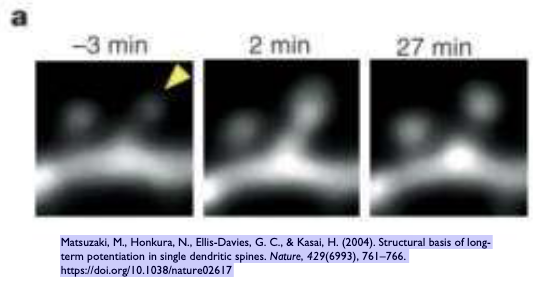
What is implicit memory, and how does it function?
refers to automatic learned behaviors that are stored in memory and recalled without intentional effort.
Examples include tying your shoes or opening a door. It is apparent when retention is exhibited on a task that does not require intentional remembering.
what is explicit memory and how does it differ from implicit memory?
involves the intentional recollection of previous experiences, such as remembering the contents of a past conversation or where you went last night.
Unlike implicit memory, it requires active thought to retrieve the information.
Examples of implicit and explicit memory?
Implicit memory includes skills like tying your shoes or opening a door.
Explicit memory includes recalling a specific event, such as a past conversation or your activities from the previous night.
What are the different fundamental systems behind implicit and explicit memory?
The declarative memory system handles factual information
These are explicit memories
The non-declarative stores memory for actions, skills, operations, and conditioned responses
These are implicit memories
These are thought to be governed by different underlying brain mechanisms/areas.
What are the different types of declarative (explicit) memories
Semantic memories: contains general knowledge that is not tied to the time when the information was learned
E.g., Knowledge about the world, facts, information about things you know
Episodic memories
Memories for specific experiences, including the time and place where they were encoded
Is Memory is a single brain process
No, Different types of memories are processed by the regions involved in that function of behaviour
E.g., Fear memory requires (and is stored at) the Amygdala
What brain structure is crucial for forming new episodic memories, and where does its name come from?
The hippocampus
Its name comes from the ancient Greek word for "seahorse," which it resembles in shape.
What role does the hippocampus play in contextual memory?
associative learning about “where” events took place.
It stores contextual information along with episodic memories.
What are place cells, and what do they do?
neurons in the hippocampus that encode information about your location.
They help associate physical context with episodic memories.